Late-ripening frost-resistant cabbage hybrid Lennox f1
Lennox F1 is a hybrid of white cabbage with high frost resistance and yield, dense heads, suitable for fresh consumption. We will tell you about these and other advantages of the hybrid, how to grow it correctly in order to get a bountiful harvest.
Lennox cabbage: description
This is a late-ripening hybrid of white cabbage. It is characterized by dense, large, sweet and juicy heads of cabbage, the main use of which is fresh consumption.
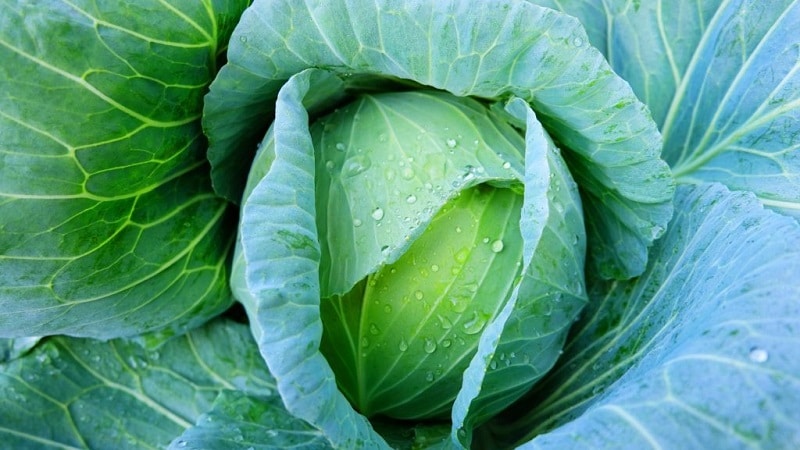
Origin and development
The Lennox hybrid was bred by breeders of BEJO ZADEN B.V. Included in the State Register in 1993.
Chemical composition and beneficial properties
100 g of cabbage contains 5% sugar, 0.6% protein, 8.5% dry matter and 41.7 mg of vitamin C.
The vegetable helps normalize metabolic processes in the body and is useful for atherosclerosis, gout, kidney and heart diseases.
Features of application
Heads of cabbage Lennox F1 can be use for stewing and preparing first courses, but their main purpose is to eat fresh, for example, in vegetable salads.
Ripening time and yield
This is a late-ripening cabbage: 167–174 days pass between the emergence of shoots and the technical ripeness of heads of cabbage. Marketable yield is 454–1060 c/ha, the maximum (recorded in the Lipetsk region) is 1060 c/ha.
Disease resistance
The hybrid is resistant to blackleg and bacteriosis, but is prone to clubroot, powdery mildew and attacks by caterpillars of white butterflies, aphids and cabbage flies.
Cold resistance
The optimal temperature for growing cabbage is +16...+18°C, seeds germinate already at +3...+5°C. Ripe heads of cabbage tolerate cold temperatures down to -3...-5°C.
Characteristics of heads of cabbage
Lennox is a compact plant with a semi-erect, large or medium rosette of leaves. The leaves are slightly concave, slightly wrinkled, obovate or round in shape, gray-green in color with anthocyanin, covered with a dense layer of waxy coating.
The heads of cabbage are oval-oblong, semi-closed, dense, weigh on average 1.6–2.4 kg, the stalk is small. The taste is sweet, without bitterness.
Suitable regions and climate requirements
The hybrid is frost-resistant and generally adapts well to various climatic conditions, so it is successfully cultivated in the Volga-Vyatka, Central Black Earth, Western and Eastern Siberian, Far Eastern, Northwestern, North Caucasian, Central and Ural regions.
Advantages and disadvantages
Main advantages:
- high productivity;
- drought and frost resistance;
- density of heads of cabbage;
- good taste;
- transportability and keeping quality;
- resistance to cracking, blackleg and bacteriosis.
Disadvantages include a tendency to clubroot and pest attacks.
Difference from other varieties and hybrids
Comparison of Lennox with other late-ripening white cabbage:
| Variety/hybrid | Head shape | Weight, kg | Productivity, kg/1 m² |
| Lennox | Oval-oblong | 1,6–2,4 | 6-12 |
| Snow White | Round-flat | 3–5 | 7,5 |
| Sugarloaf | Ball-shaped | 3 | 6 |
| Kolobok F1 | Round | Up to 4.5 | 7–12 |
| Turkiz | Round | 2-3 | 8–10 |
Features of planting and growing
This hybrid is suitable for growing both through seedlings and direct sowing of seeds in open ground. To obtain a high-quality harvest, it is important to observe the planting deadlines and provide the plants with proper care.
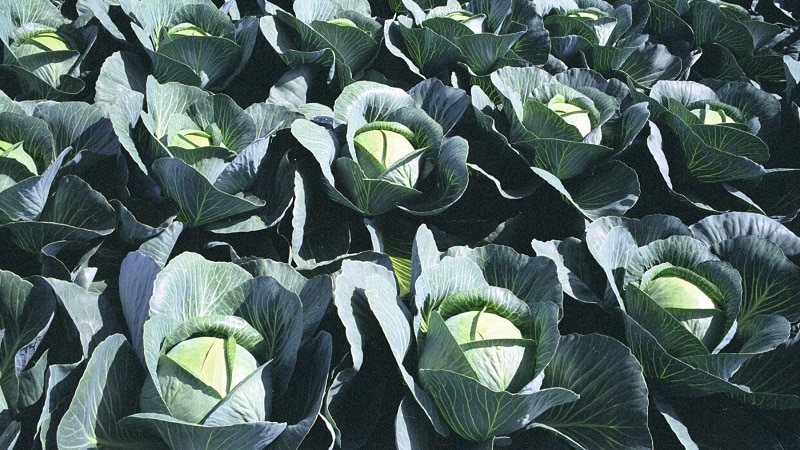
Preparing to plant seeds and seedlings
Seeds for seedlings are sown in mid-April, in regions with a shorter summer due to climatic conditions - in the second ten days of March.
If seeds collected independently or not processed by the manufacturer, pre-plant preparation is carried out. To do this, they are soaked for 20–30 minutes in hot (+50°C) water and washed in cold water for 3 minutes. Afterwards, they are dipped into a solution of manganese or a growth stimulant (Fitosporin, Epin) for an hour to disinfect and accelerate germination. Then wrap it in a damp cloth and leave it in a warm place for 24 hours, and then for a day on the bottom shelf of the refrigerator.
For sowing, use a ready-made substrate or mix it yourself, taking equal parts of peat, humus and turf.
Reference. To prevent diseases, the self-prepared soil mixture is calcined in the oven at a temperature of at least 200°C or poured with boiling water with the addition of potassium permanganate.
The soil mixture is poured into the prepared containers, the seeds are distributed on the surface and buried 1–1.5 cm. When using common containers, the seedlings are planted at the age of 15 days into separate containers measuring at least 3x3 cm. 2 weeks after this, they are transplanted into pots 5 ×5 cm, deepening the sprouts into the ground up to the cotyledon leaves.
Containers with seedlings are kept indoors at an air temperature of +18...+20°C; for a week after seed germination it is maintained at +8...+10°C during the day and +6...+8°C at night. Then it is increased to +15...+17°C during the day and +10...+12°C at night. Daylight for seedlings should last 14–16 hours; a phytolamp is used for additional illumination.
Watering is carried out as needed so that the substrate does not dry out or become waterlogged. Fertilizers are applied three times:
- 7 days after the picking and 2 weeks after that - a solution of superphosphate, potassium sulfate and ammonium nitrate;
- 4 days before transplanting into open ground - a solution of ammonium nitrate, potassium sulfate and superphosphate.
10 days before planting on the beds The seedlings begin to harden off. To do this, open a window in the room for 3-4 hours for 2-3 days. After the container, they are taken out onto the street or balcony for several hours; 2-3 days before transplantation, the plants are taken indoors only for the night.
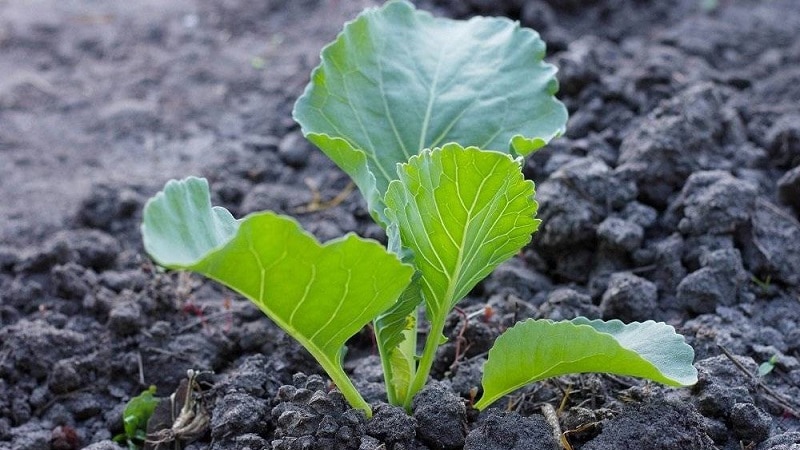
Lennox cabbage and seedless planting
When growing without seedlings, prepare the site in advance: clear it of debris, weeds and plant debris, loosen and level the soil. Dig planting holes, place 6-7 seeds in each, deepen them 1-2 cm, sprinkle with soil and water.
The beds are mulched with peat or humus. At an air temperature of +18...+20°C, seedlings appear within 3-4 days.
Soil requirements
For planting, choose a well-lit place. The hybrid prefers loose, fertile soil with good aeration, moisture permeability and neutral or medium acidity. The best option is loam. Acidified soil is limed before planting.
Predecessors
Cabbage do not plant in the area where they previously grew radishes, radishes, turnips and other cruciferous vegetables. The best predecessors are cucumbers, legumes and grains, onions, carrots, potatoes.
Dates, scheme and rules of planting
The seedlings are transplanted into the ground approximately 60 days after sowing, when 5-6 true leaves have formed on the seedlings. As a rule, this is May 10–20.
The site is dug up in the fall, 5-6 kg of humus, 2 tbsp. are added per 1 m² of land. l. superphosphate and 1. tbsp. l. potassium chloride.
Planting pattern:
- Form beds on the prepared area, maintaining a distance of 70 cm between them.
- Make planting holes every 60 cm.
- Remove the seedlings from the containers and place them in the center of the holes.
- Cover the plants with soil so that they are buried down to the first true leaf.
Features of cultivation
To grow large heads of cabbage, it is important to properly care for cabbage: water and feed it in a timely manner, regularly loosen and weed the soil.
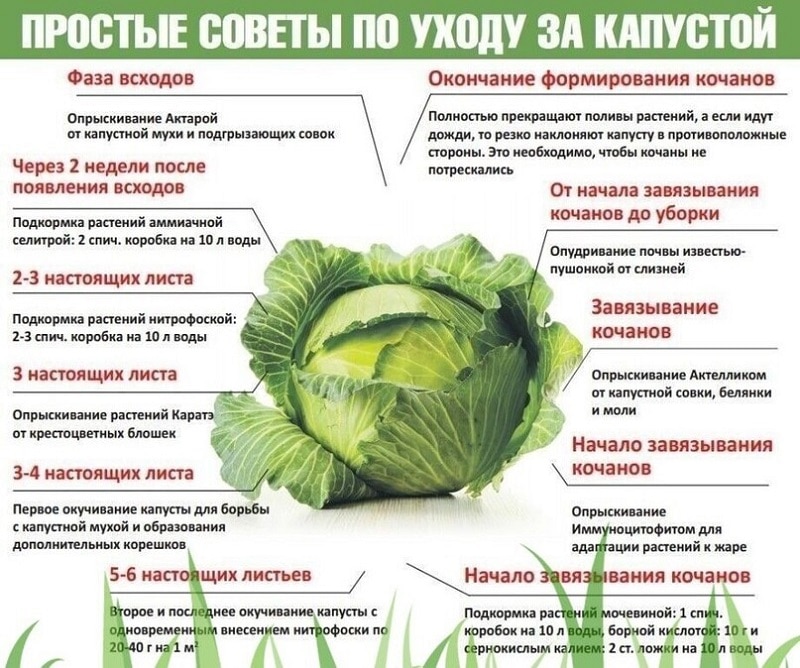
Watering mode
The frequency of watering depends on the climatic and weather conditions of the region. When watering, they are guided by the condition of the soil: it should not dry out or be waterlogged.
On average, cabbage is watered once a week, using warm water heated in the sun, pouring it under the root or by drip method. To retain moisture, the soil is mulched with straw, peat or sawdust (layer thickness - 3-4 cm).
Loosening and hilling
After watering, the soil is loosened to avoid the formation of a dry crust on its surface, and weeds that can cause the development of diseases and pest attacks are removed.
Cabbage is hilled 20–30 days after transplanting the seedlings to the beds and 2 weeks after that. The procedure provokes the growth of additional roots and improves nutrition.
Top dressing
Lennox cabbage is fed according to the following scheme:
- 14 days after transplanting the seedlings - with a solution of mullein or bird droppings at the rate of 0.5 liters per bush;
- after 2 weeks - bird droppings or mullein with the addition of nitrophoska, consumption - 1 liter of solution for each plant;
- after 15–20 days - a solution of mullein, potassium sulfate and superphosphate, consumption - 1 liter for each bush.
Fertilizers are applied in the evening, after watering or rain.
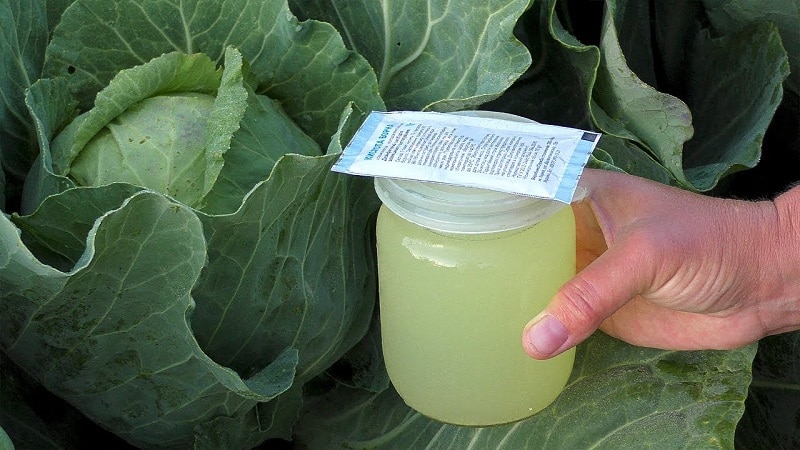
Measures to increase yield
The quantity of the harvest, as well as its quality, is a consequence of caring for cabbage. It is important to monitor the regularity of watering so that the soil does not dry out, but is not overly moistened, in a timely manner. feed the plants and carry out preventive treatments of plantings so that the crop does not suffer as a result of diseases or pest attacks.
Disease and pest control
Diseases and pests that pose a danger to the hybrid:
| Disease/pest | Treatment/prevention |
| White butterfly caterpillars | Frail seedlings are covered with non-woven material, and the plantings are dusted with ash. |
| Aphid | The beds are dusted with ash or sprayed with a decoction of yarrow. |
| Cabbage fly | Plantings are treated with “Aktara”, “Proclaim”, “Karate” and other insecticides. |
| Kila | To prevent disease, the soil is limed. In case of damage, the cabbage is dug up and the soil is sprinkled with lime. |
| Powdery mildew | Plants are sprayed with Bordeaux mixture. |
Difficulties in growing
Problems encountered while growing Lennox:
- the formation of loose, small heads of cabbage - most likely, the cabbage does not have enough light;
- the leaves turn yellow, lose their elasticity, and wither - the main signs of clubroot, to which the hybrid is prone to damage.
Harvest and storage
Heads of cabbage are ready for harvesting approximately 150 days after emergence. As a rule, this is the end of September - beginning of October. The harvest is being collected in dry weather at temperatures +2…+8°C.
Leave 2-3 cover sheets on heads suitable for storage (whole, without signs of damage) and put them in a dark room with a temperature of 0...+2°C and an air humidity of 90–98%, where they are stored for 7-8 months.
Tips and reviews from experienced gardeners
Vegetable growers recommend:
- When determining the time for sowing seeds, focus on the desired harvest time. This cabbage matures in about 150 days, which is the expected time for harvesting the heads of cabbage.
- Plant marigolds between rows, as they repel cabbage flies.
Reviews of Lennox cabbage are positive.
Valentina, Moscow region.: “I decided to plant this hybrid on my plot after I tried fresh lettuce from Lennox while visiting. I have never regretted it. Caring for cabbage is minimal, even novice gardeners can handle it. The heads of cabbage are large, dense and very tasty. The harvest can be stored for more than six months, enough for the whole winter.”.
Valeria, Bryansk: “Lennox is the best late-ripening cabbage of all the varieties I have grown. The heads of cabbage are quite large and dense, do not crack, tolerate transportation well and are stored for a long time, the yield is consistently high. These characteristics are important to me, since I grow cabbage not only for myself, but also for sale. Care, of course, is needed, but it is not too labor-intensive. The main thing is to water the plants and treat them from diseases and pests.”.
Conclusion
Lennox cabbage f1 is a hybrid of white cabbage, which is characterized by high yield, resistance to fork cracking, drought, frost, blackleg and bacteriosis. Heads of cabbage have a sweetish taste without bitterness. Among the disadvantages of the hybrid is its tendency to clubroot and pest attacks.